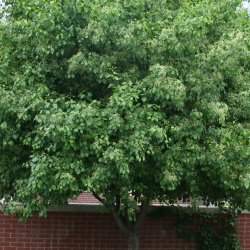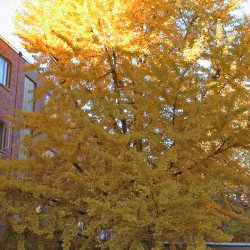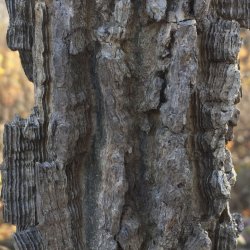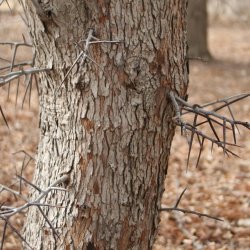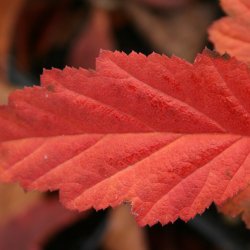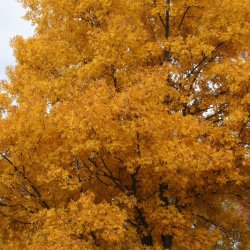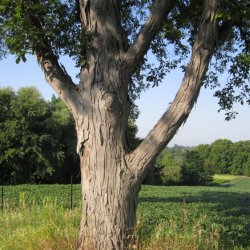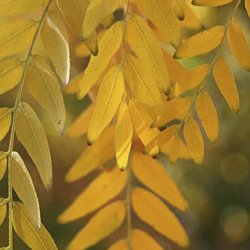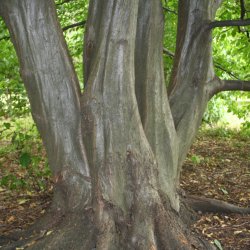Euonymus, Winterberry Deciduous
Euonymus bungeanus
Also known as spindletree, winterberry euonymus is best known for its fall colors of pink, orange, and red found in both its leaves and fruit capsules.
Hawthorn, Cockspur Deciduous
Crataegus crusgalli
The hawthorns are a diverse and confusing group of plants with at least 200 distinct species occurring throughout the Northern Hemisphere. There are dozens of species native to North America, including several that are grown as landscape trees.
Hawthorn, Downy Deciduous
Crataegus mollis
Native to the Midwest including eastern Nebraska and Kansas, where it can be found in the savanna understory and prairie edges.
Hickory, Bitternut Deciduous
Carya cordiformis
Bitternut hickory is native to much of the eastern US and reaches its western limit in eastern Nebraska. It is the most commonly encountered hickory in Nebraska’s native woods and is occasionally used in parks and other community plantings.
Hickory, Shagbark Deciduous
Carya ovata
Along with bitternut, shagbark hickory is one of two native hickories in Nebraska’s eastern woodlands where it is often found growing on relatively moist slopes in association with oaks and lindens.
Honeylocust Deciduous
Gleditsia triacanthos
Honeylocust is a very tough and adaptable tree that is native to woodlands, pastures and fence lines of the eastern Great Plains. Thornless and fruitless varieties have been developed by the horticultural industry and are used extensively in landscaping. The trees are very hardy and are often used in parking lot islands and along sidewalks.
Hornbeam, American (Musclewood) Deciduous
Carpinus caroliniana
American hornbeam, also known as musclewood or blue beech, is a small, slow-growing understory tree native to hardwood forests of the eastern US and Canada. The tree is perhaps best known for its smooth and sinewy steel-gray bark and the muscle-like look of its maturing trunk and larger branches (thus one of its common names).
Linden, American (Basswood) Deciduous
Tilia americana
American linden, also known as basswood, is native to the
Missouri River basin of eastern Nebraska and extends along the Niobrara River reaching as far west as the Black Hills of western South
Dakota.
